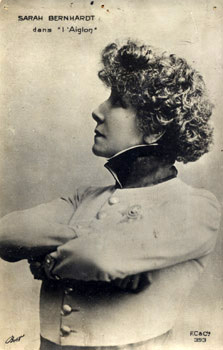 p 47 | "...yellow dress with big black flowers...": Or maybe the black dress with the big yellow flowers...
p 47 | "...yellow dress with big black flowers...": Or maybe the black dress with the big yellow flowers...p 47 | "... things from Callot's or Doucet's or Paquin's ...": This wonderful page from the Glamour Daze blog should make everything clear.
p 48 | Lady Warwick was Daisy Greville, Countess of Warwick, lover of King Edward VII of England. Not sure which Duchess of Marlborough Oriane is referring to; I like this one, so French!
 p 52 | The Galeries Lafayette is an upmarket French department store, founded in 1912. Its flagship store is on Boulevard Haussmann in the 9th arrondissement of Paris.
p 52 | The Galeries Lafayette is an upmarket French department store, founded in 1912. Its flagship store is on Boulevard Haussmann in the 9th arrondissement of Paris.p 52 | This is a little later than the period the book is in... There is some gay French history on the left side of this page.
p 53 | "Xerxes, son of Darius, ordering..." : After the battle of Salamis, the Persian fleet was destroyed by a storm in the Hellespont. Xerxes, the King of Persia, is said to have vented his feelings by having his servants beat the sea with rods.
p 54 | Social classes in 19th century Paris, with a chronology. A little earlier than the book's time setting. Nicely done.
p 54 | "... Jupien's niece had been, when scarcely more than a child, 'in trouble'..." : Consider these historical notes: 1832 - an age of consent is introduced on 28 April, fixed to 11 years for both sexes.
1863 - Age of consent is raised to 13 years.
p 57 | The House of Croy is an international family of European nobility which held a seat in the Imperial Diet from 1486, and was elevated to the rank of Princes of the Holy Roman Empire in 1594. In 1913 the family had branches in Belgium, France, Austria and Prussia. And the Princes Murat also.
p 59 | hand cramps in violinists -- a real thing!
p 60 | According to this site, before World War I, when France was firmly on the gold standard, a franc was worth about 19 cents, or 5.18 to the dollar. So, 5000 francs at that time would have been about $950. Earlier, it could have been more, so maybe about $1000.

p 63 | Violinist Jacques Thibaud (1880-1953) can be heard here.
 p 64 | Syringa is lilac, pronounced like this. Well, seh-RING-gah.
p 64 | Syringa is lilac, pronounced like this. Well, seh-RING-gah. 













.svg/230px-Escudo_de_Espa%C3%B1a_(mazonado).svg.png)








